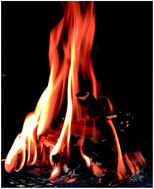Comprehensive organic emission profiles, secondary organic aerosol production potential, and OH reactivity of domestic fuel combustion in Delhi, India†
Abstract
Domestic solid fuel combustion is a major source of organic compounds to the atmosphere in gas and aerosol phases; however, large uncertainties exist in the current understanding of the gas-to-particle partitioning and the drivers of the reactivity of these emissions. This study developed comprehensive, model-ready organic emission profiles for domestic solid fuel combustion sources collected from Delhi, India. It also examined the organic species responsible for secondary organic aerosol (SOA) production potential and hydroxyl radical (OH) reactivity of these emissions. The profiles spanned the entire volatility range, including non-methane volatile organic compounds (NMVOCs, effective saturation concentration, C* = 3 × 106 to 1011 μg m−3), intermediate-volatility organic compounds (IVOCs, C* = 300 to 3 × 106 μg m−3), semi-volatile organic compounds (SVOCs, C* = 0.3–300 μg m−3) as well as low- and extremely low-volatility organic compounds (L/ELVOCs, where LVOC C* ≤ 0.3 μg m−3). The profiles predicted that IVOCs would contribute significantly to SOA production and that the combustion of fuel wood and charcoal released some of the smallest proportions of SVOCs. A model was developed to examine SOA production from burning emissions which estimated that phenolics would contribute 10–70% of the SOA. Furanics were the most important reactive species, contributing 9–48% of the OH reactivity and 9–58% of the SOA. Different combustion sources were also compared, with emissions from fuel wood, crop residue, cow dung cake and municipal solid waste (MSW) burning shown to be 30, 90, 120 and 230 times more reactive with the OH radical than emissions from liquefied petroleum gas (LPG) fuel. This study also estimated 3–4 times more SOA from cow dung cake combustion and 6–7 more from MSW combustion than fuel wood under comparable combustion conditions. The results of this study suggest that emissions from the combustion of domestic solid fuel sources in Delhi have the potential to significantly degrade local and regional air quality. As a result, more effective mitigation strategies are required to limit the impacts of solid fuel combustion on human health in countries like India.



 Please wait while we load your content...
Please wait while we load your content...